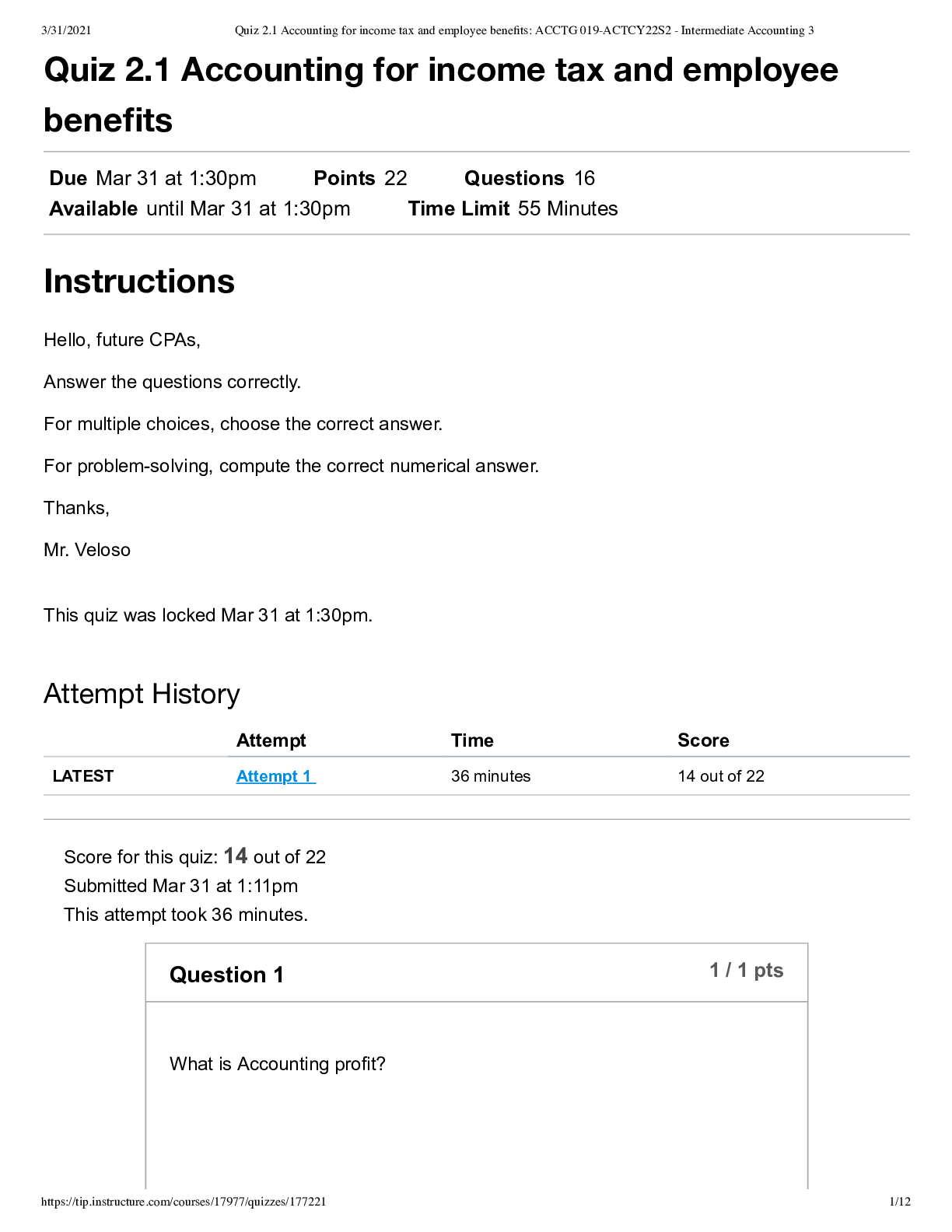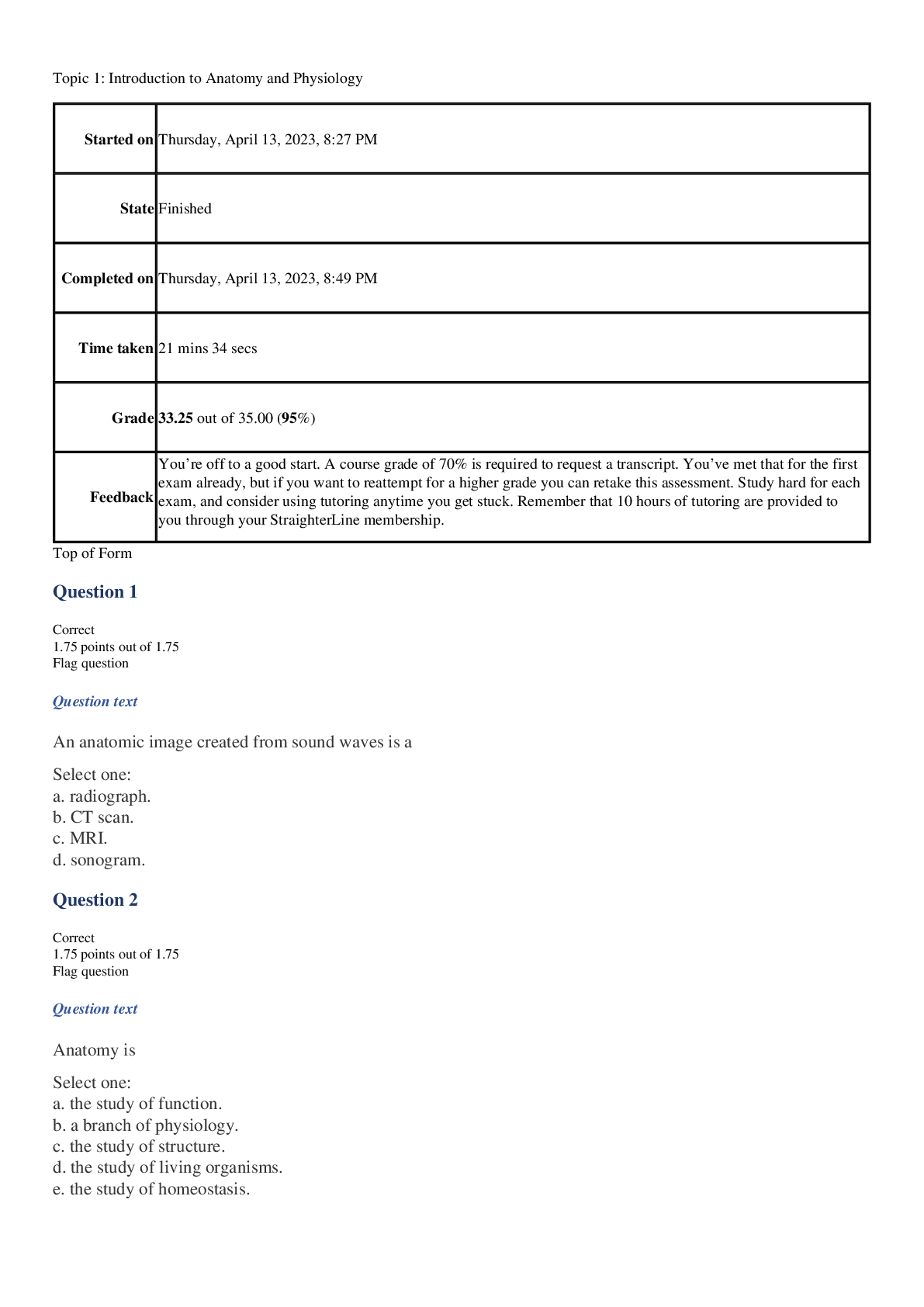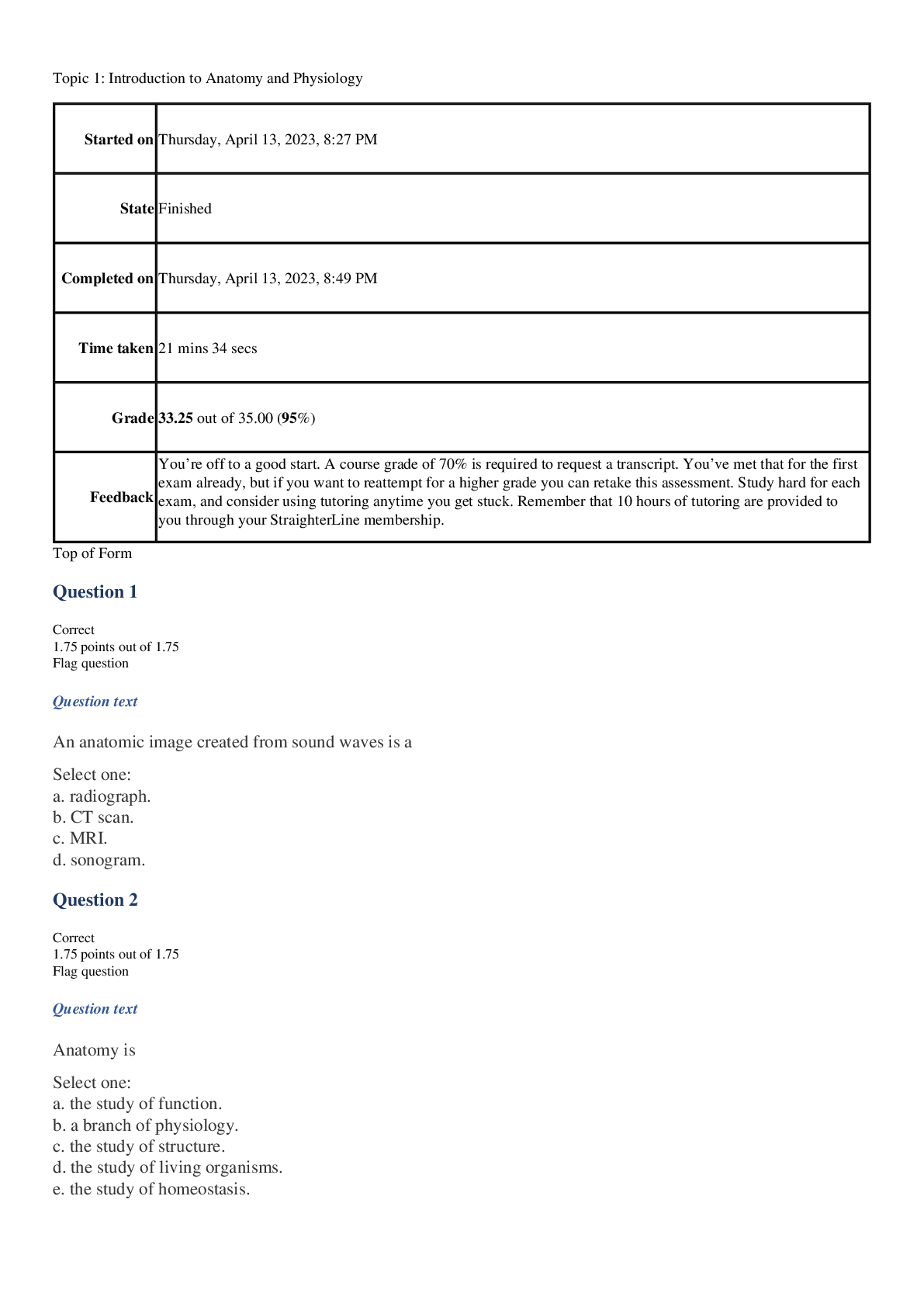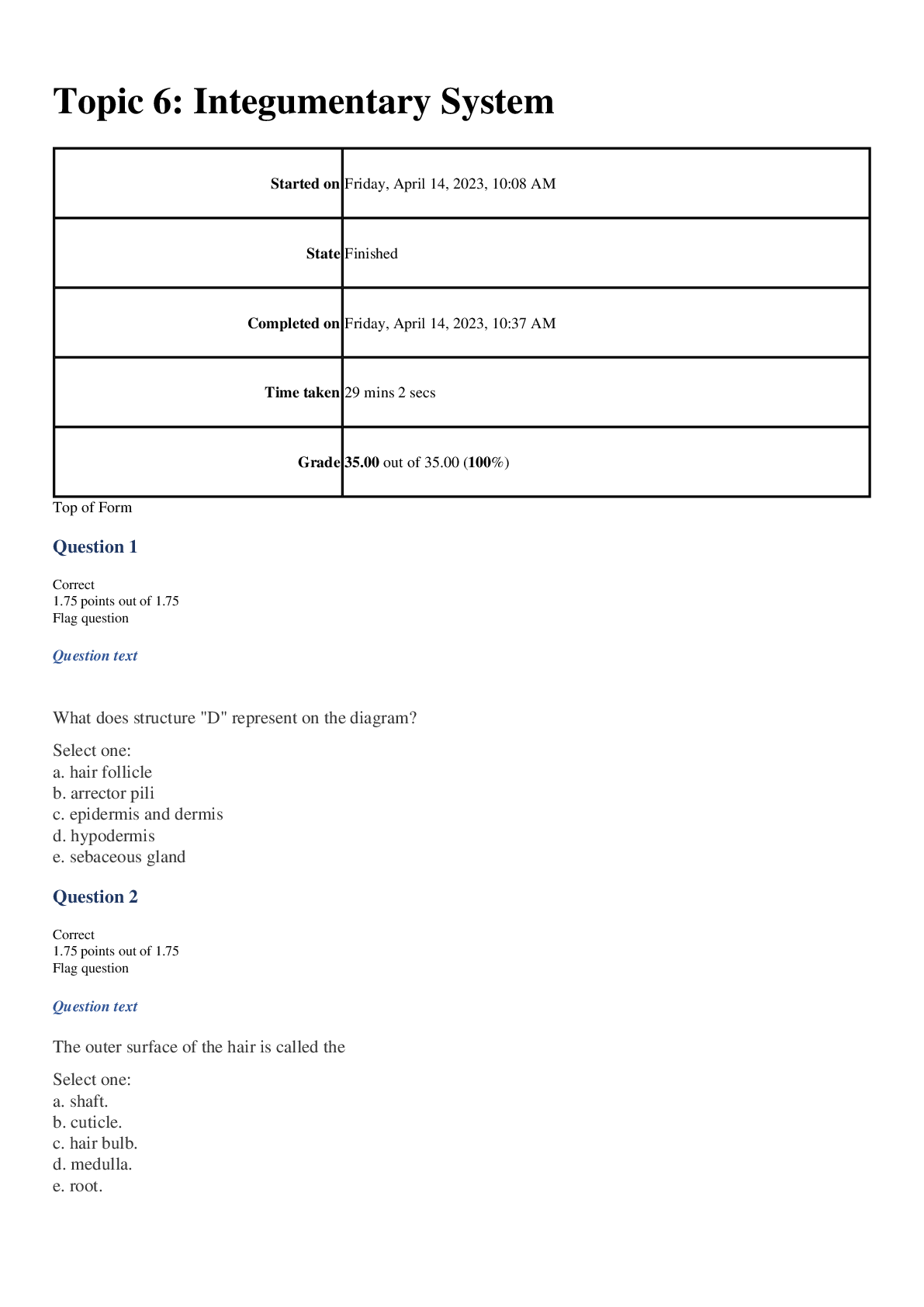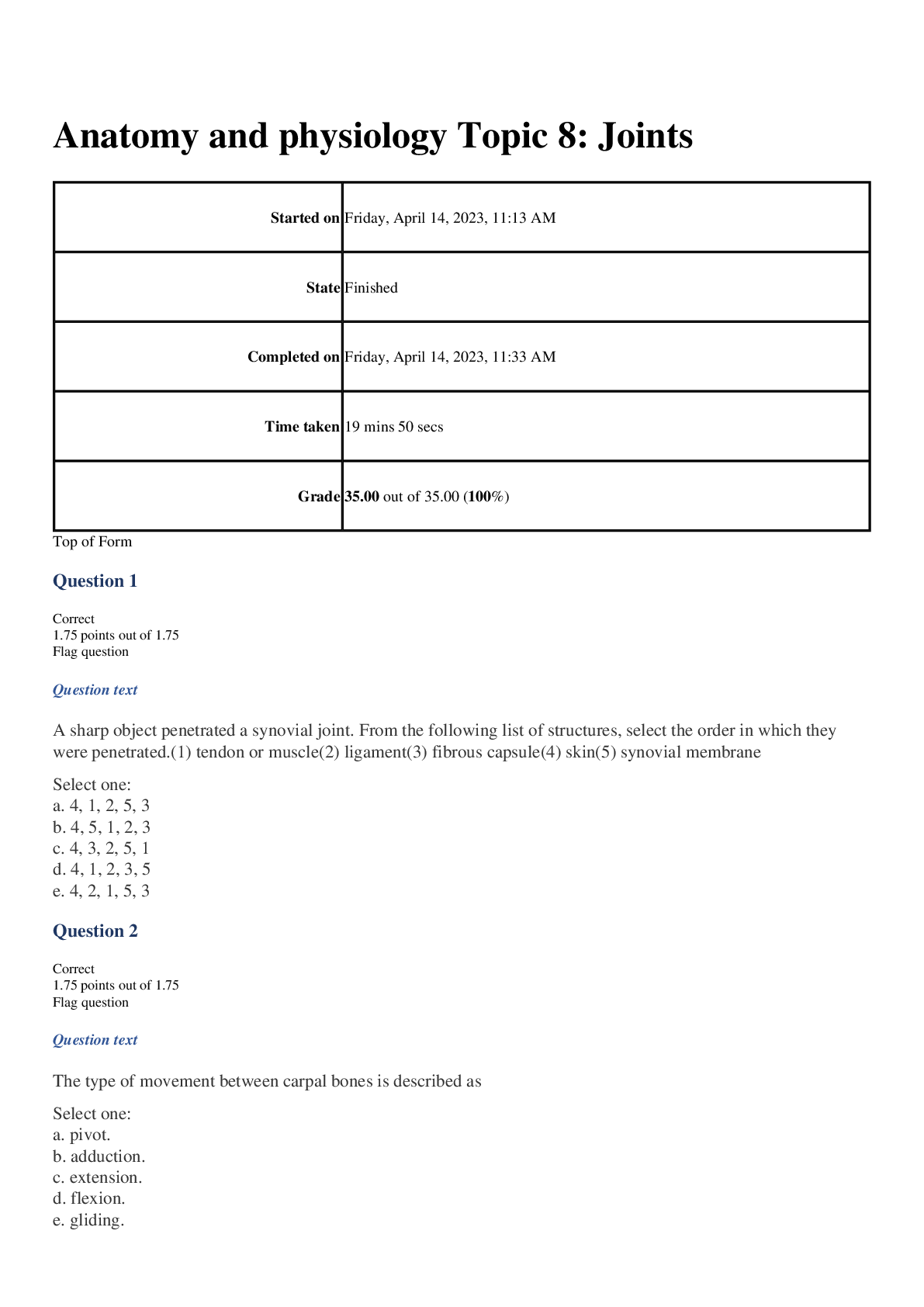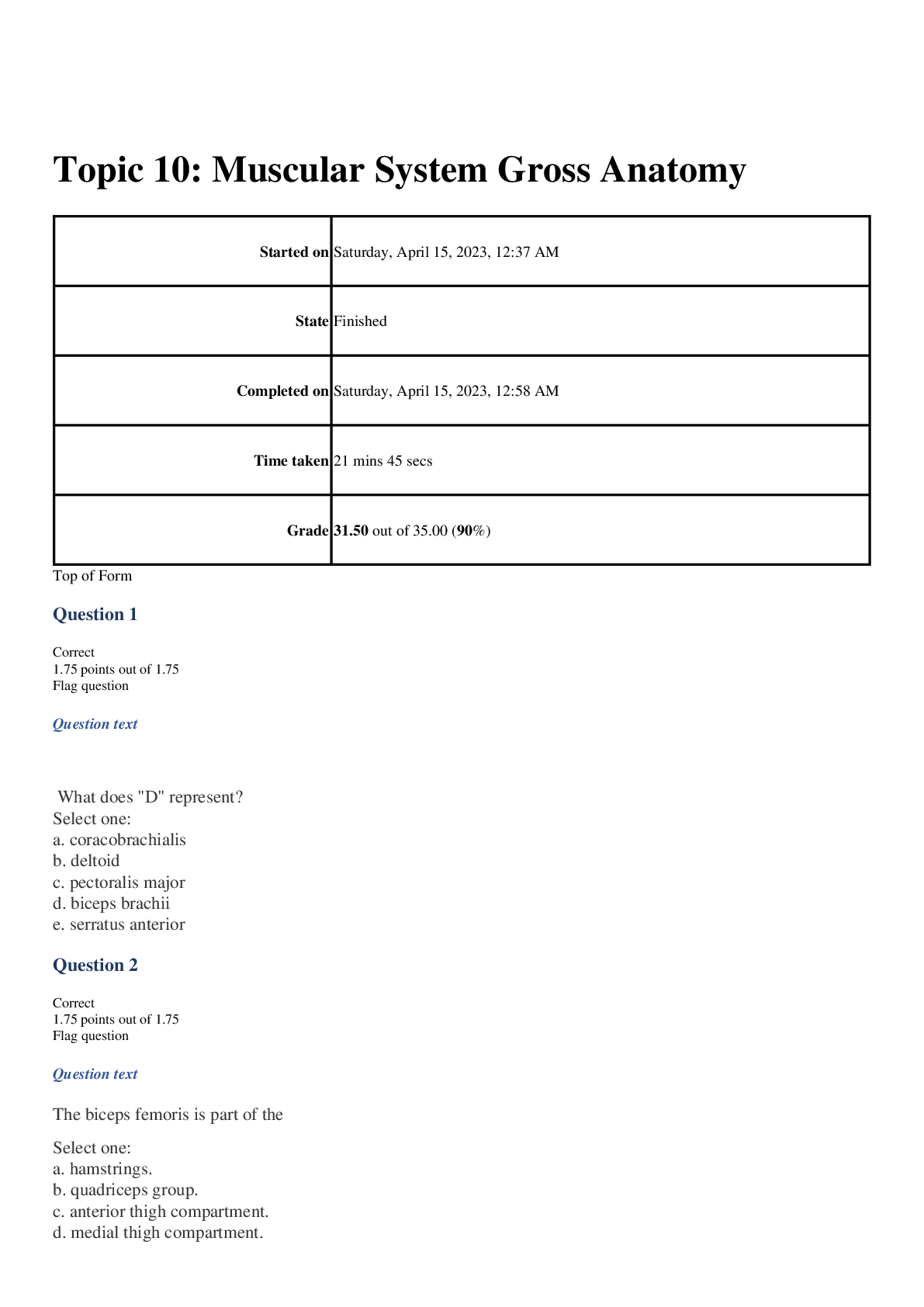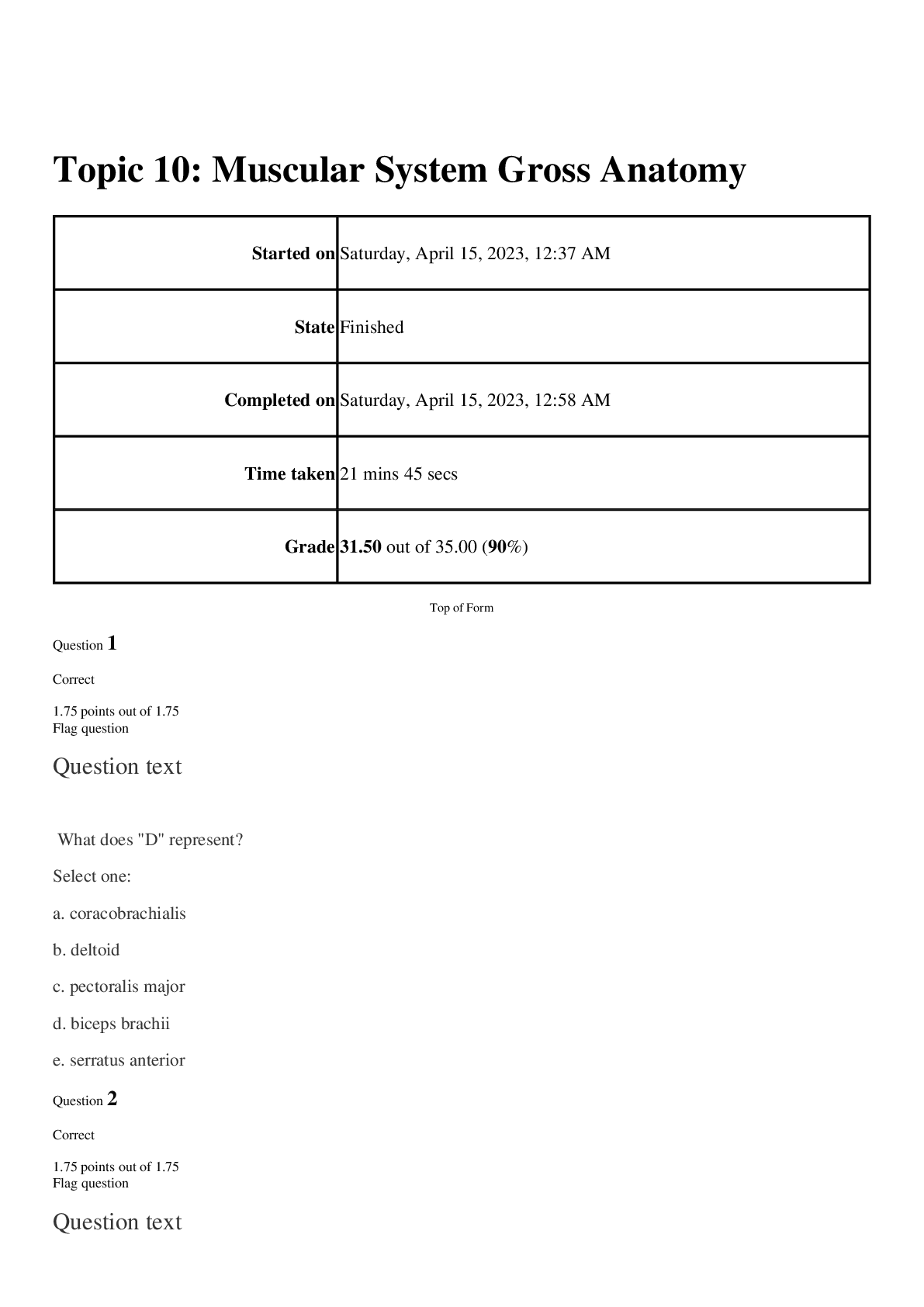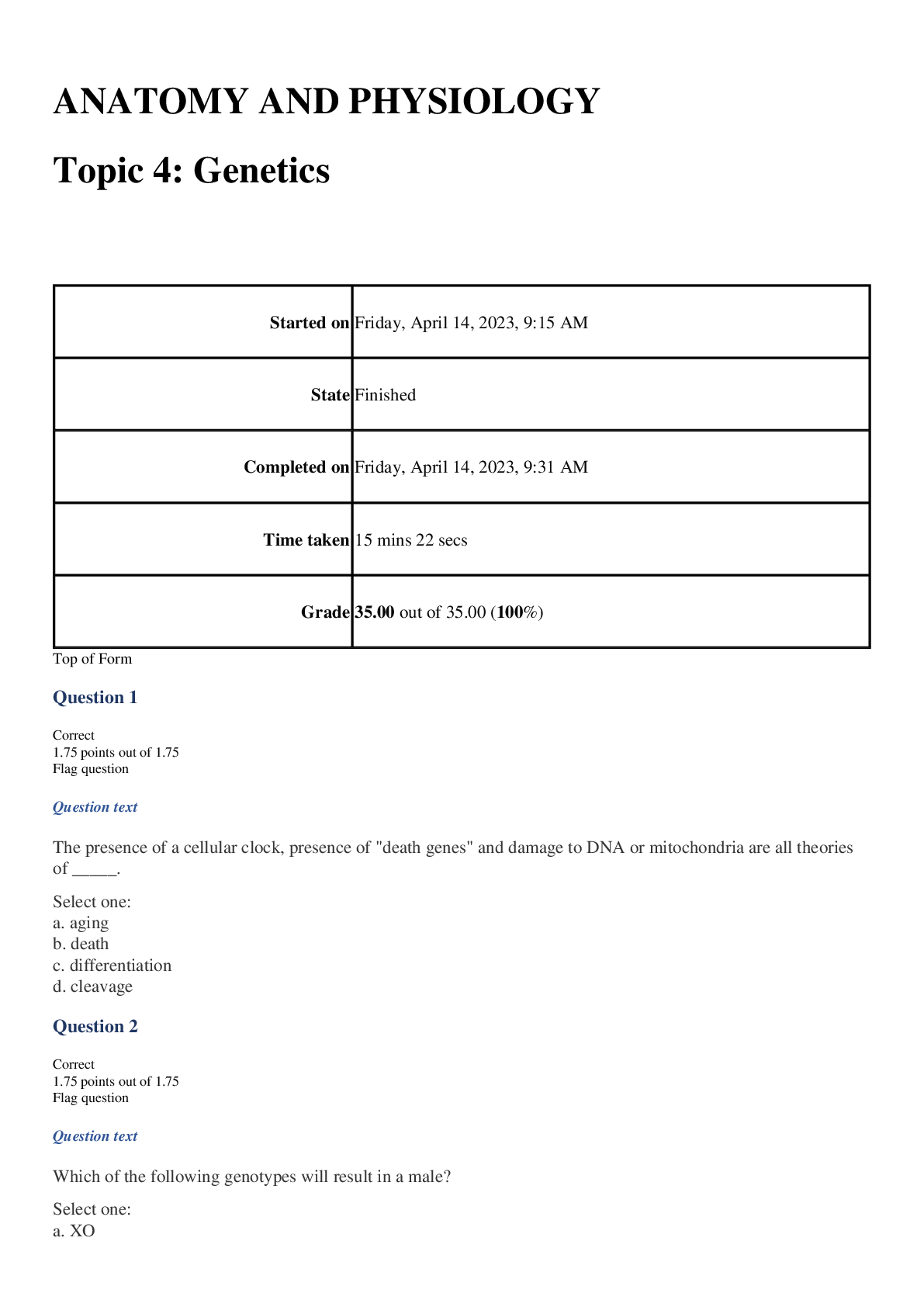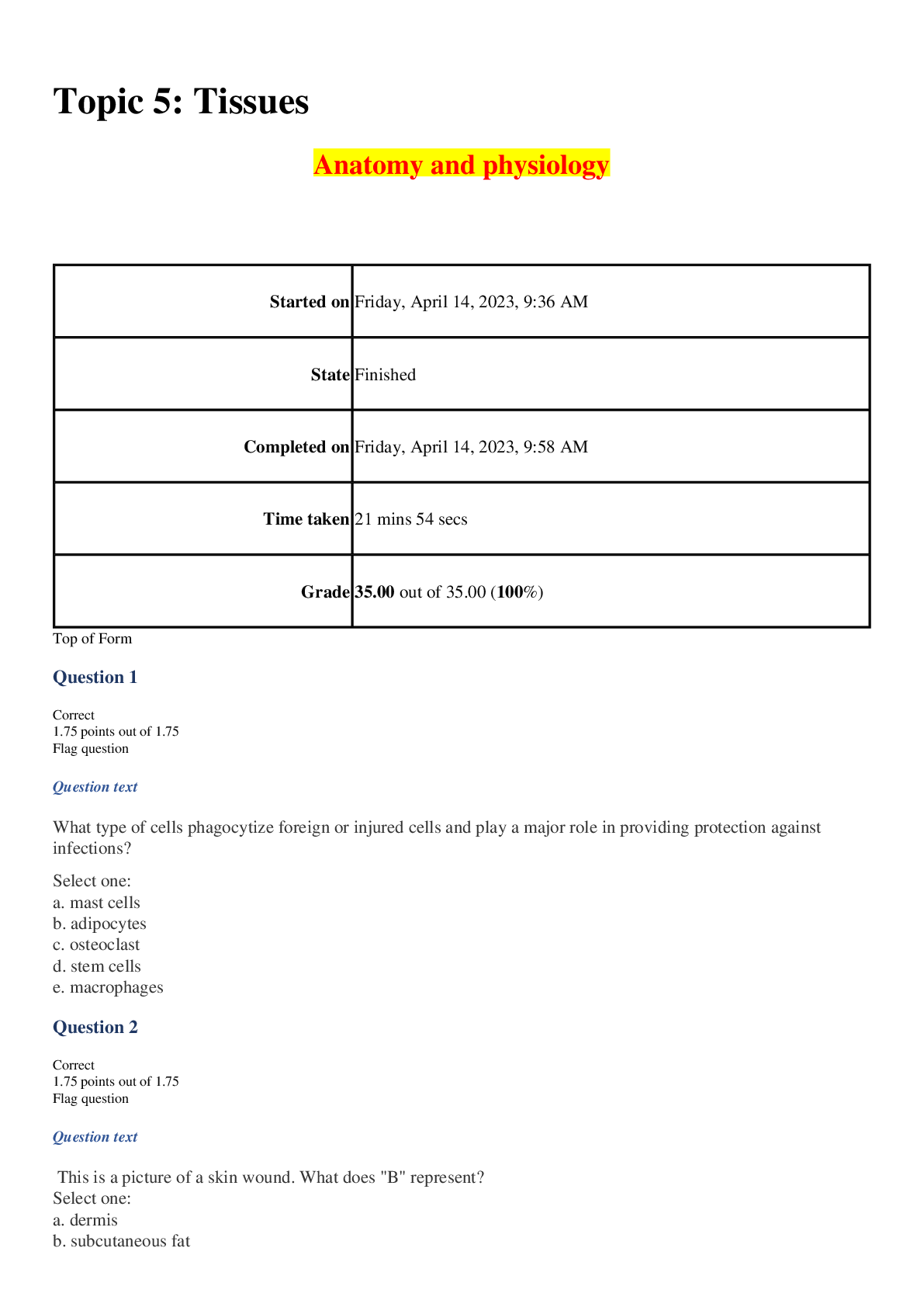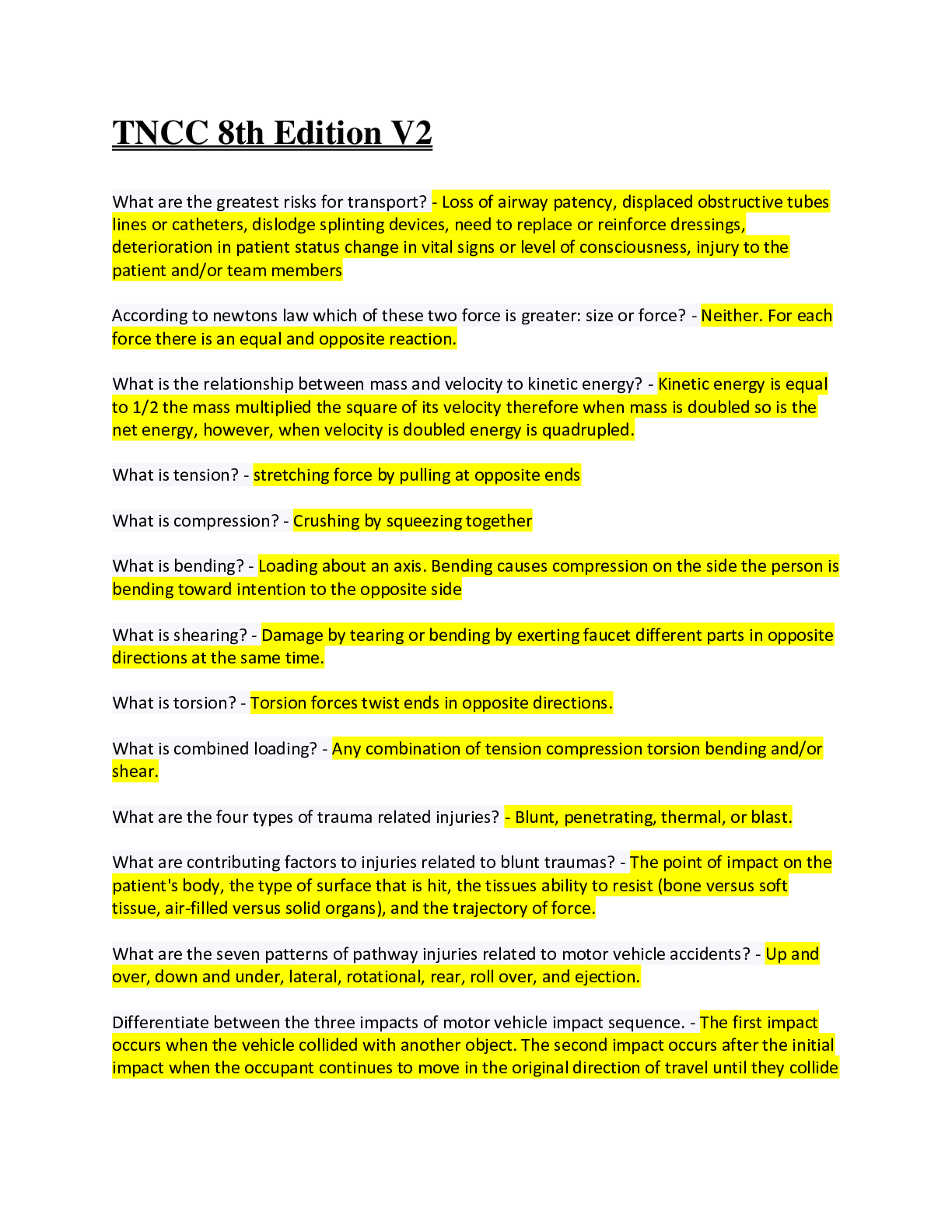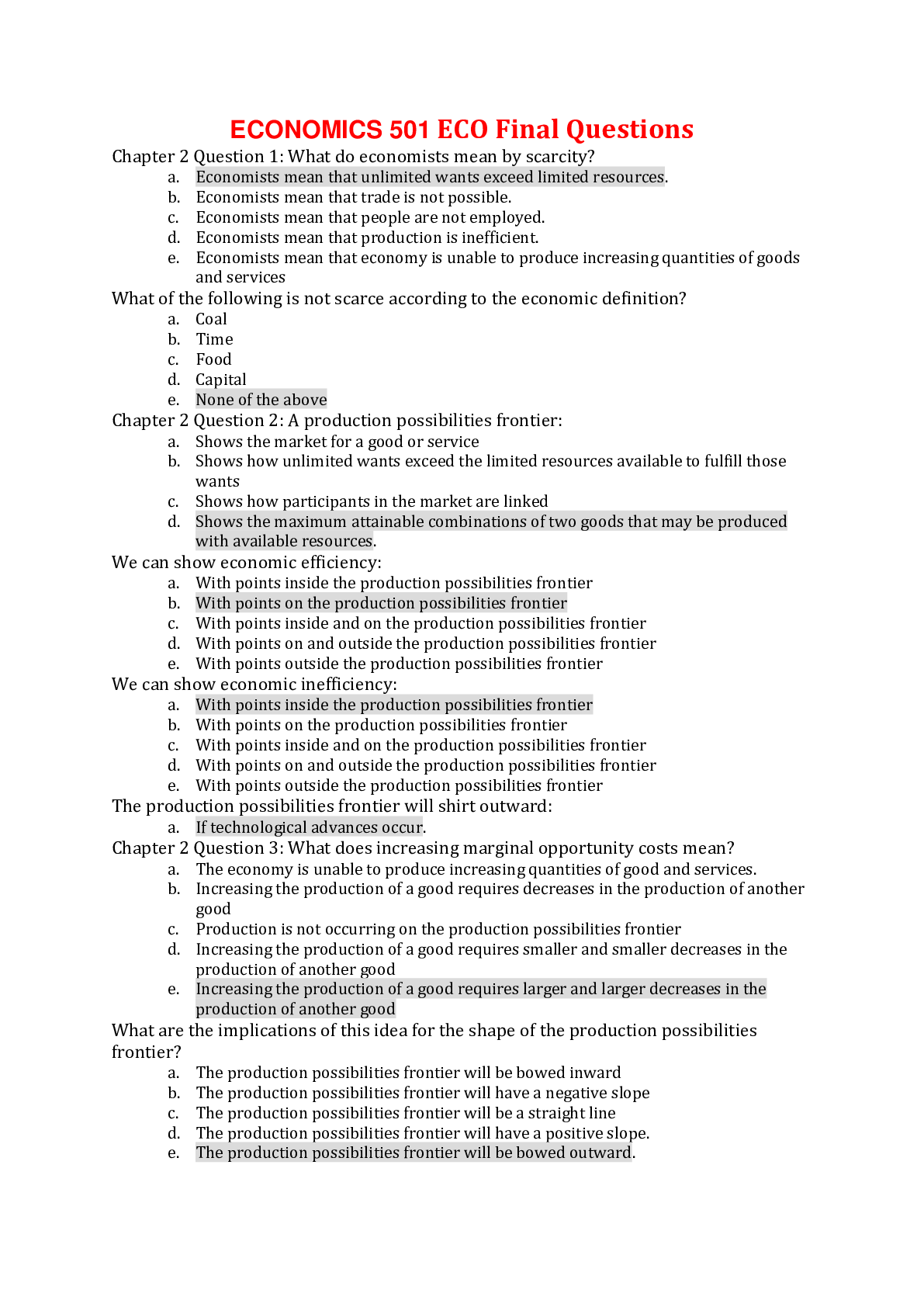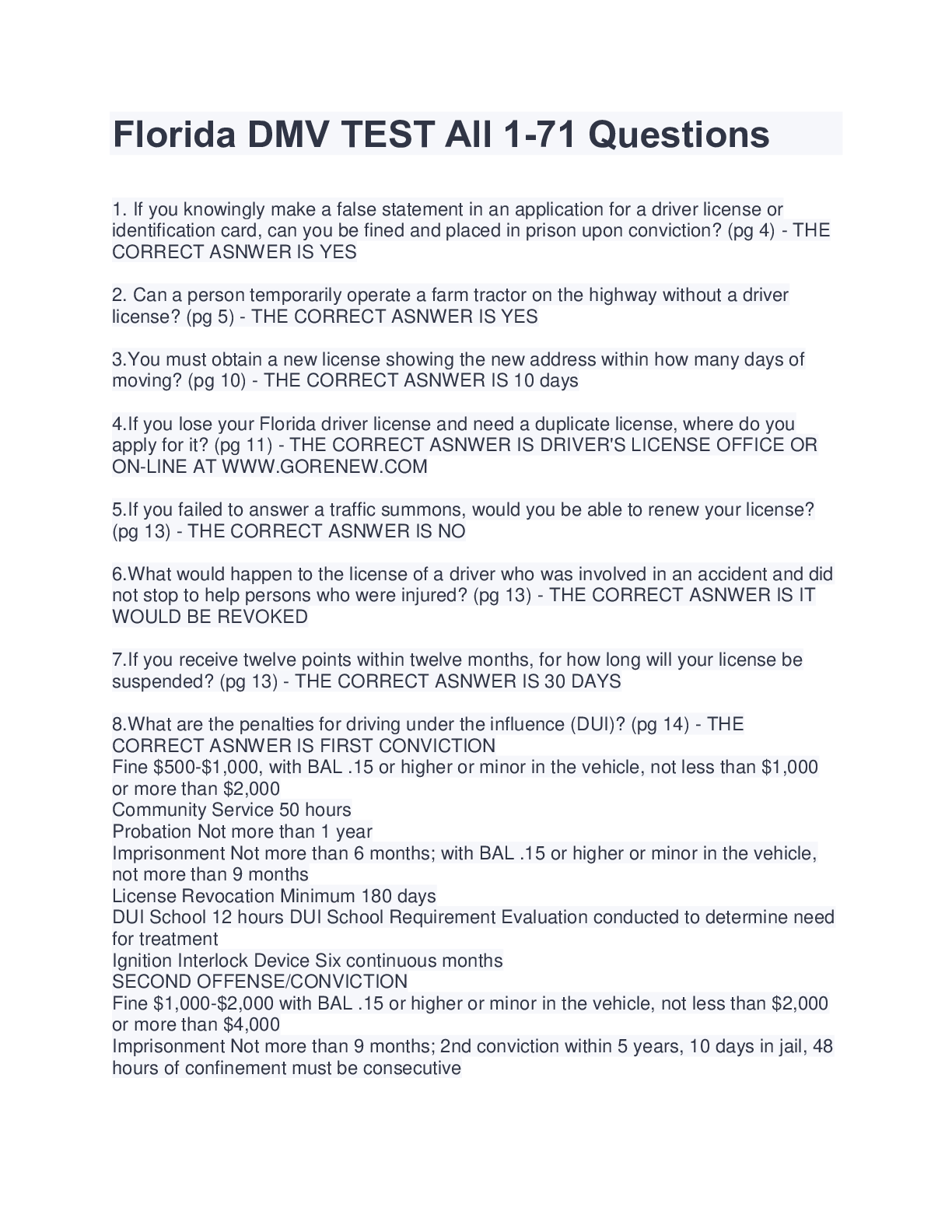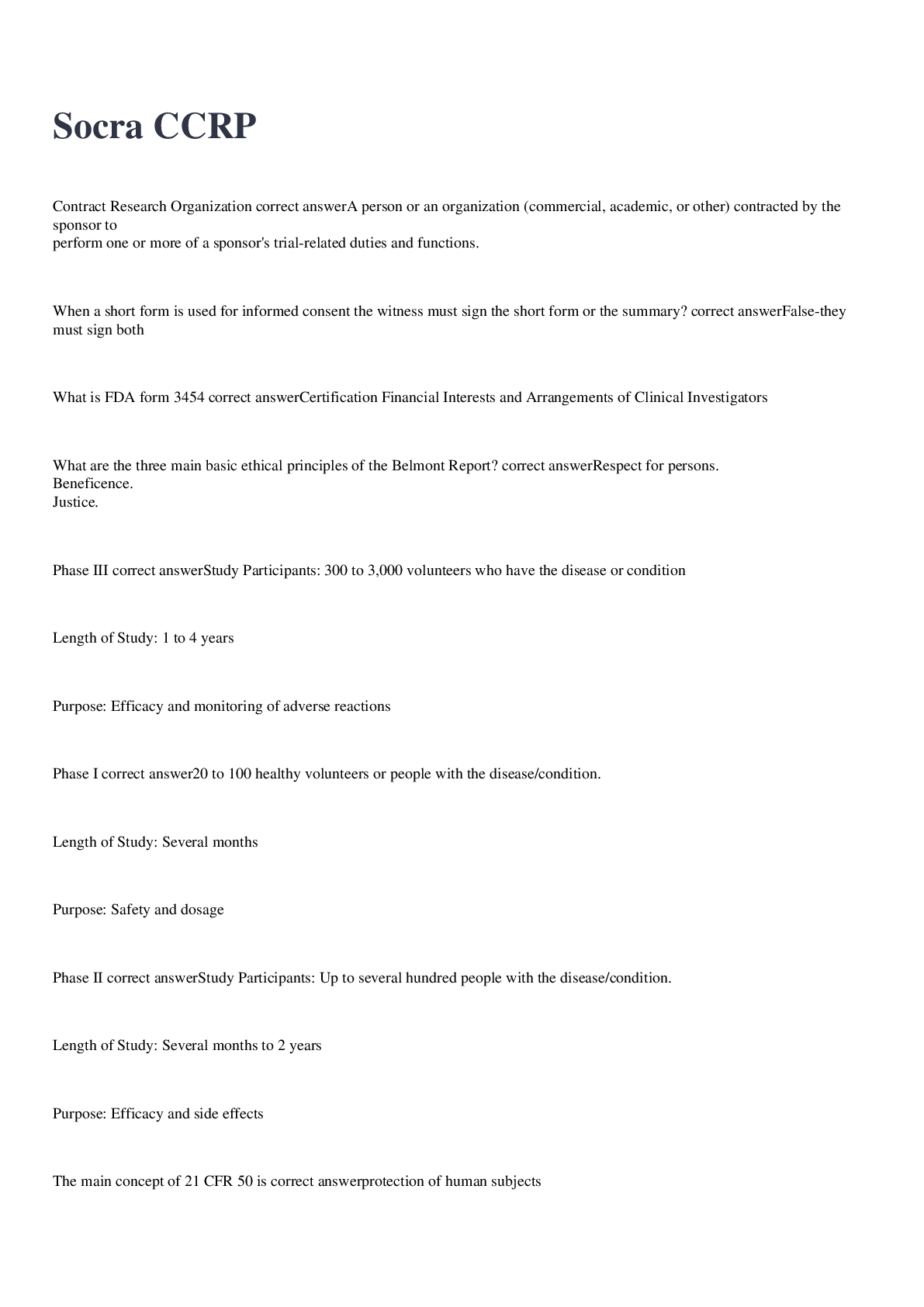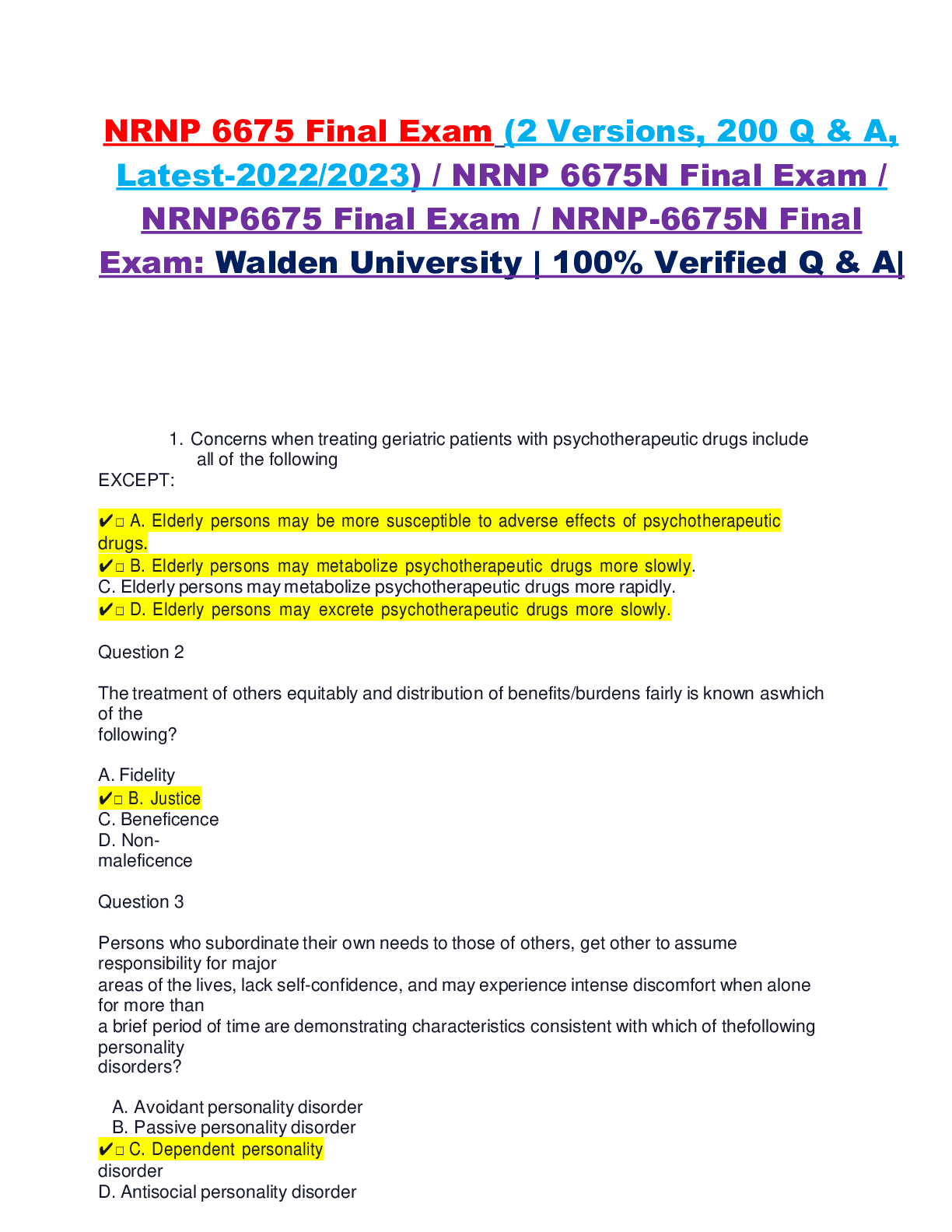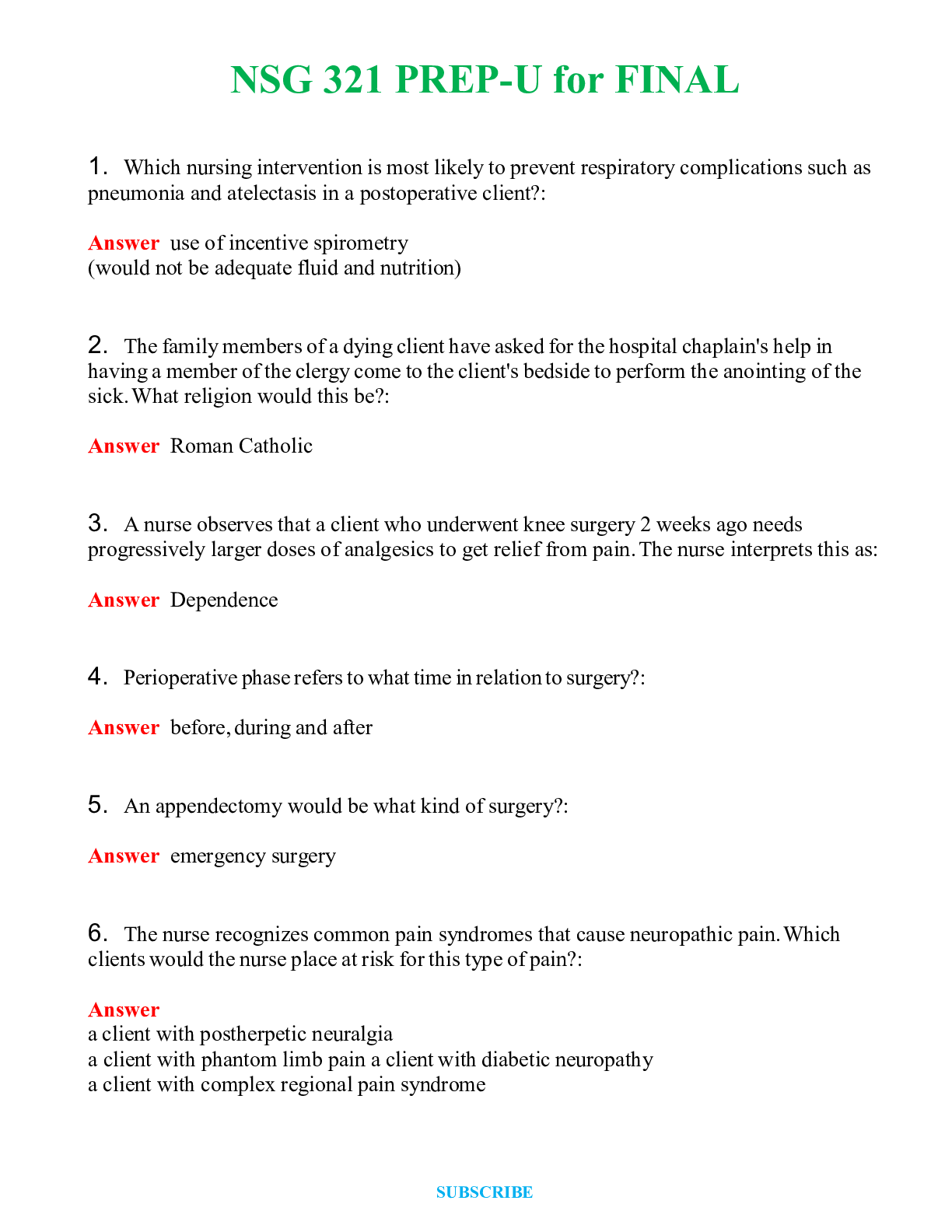AORN PERIOP 101 Q&A. 100% Accurate, graded A+
Document Content and Description Below
AORN PERIOP 101 Questions and answers. 100% Accurate, graded A+ All the following professionals are qualified to provide anesthesia to a patient EXCEPT: a) anesthesiologist b) CRNA c) anesthesi... ology assistant d) operating surgeon - ✔✔d) operating surgeon Of the following, which is not used to secure airway: a) ET tube b) LMA c) nasal cannula d) oral airway - ✔✔c) nasal cannula The perioperative team should know the location of equipment stored in the OR and in the department. Equipment that the anesthesia provider may request includes: a) video laryngoscopy devices b) fiberoptic bronchoscopes c) suction tips and devices d) all of the above - ✔✔d) all of the above General Anesthesia - ✔✔a drug-induced reversible state of unconsciousness, it includes amnesia, analgesia, loss of responsiveness, decreased stress response, and loss of skeletal muscle reflexes to varying degree Regional Anesthesia - ✔✔an injection of local anesthetics near nerve fibers to cause reversible loss of sensation over an area of the body, common examples include spinal, epidural, and peripheral nerve blocks Monitored Anesthesia Care (MAC) - ✔✔when an anesthesia provider monitors the patient, administers sedatives and other agents as needed, and provides medical services as needed Moderate Sedation - ✔✔the administration of sedative, analgesic, and/or anxiolytic agents by a physician or under physician supervision. Depending on state laws and hospital policies, a perioperative nurse may be able to administer this type of anesthesia Local Anesthesia - ✔✔The infiltration or topical administration of agents to anesthetize a part of the body. It is typically used for minor procedures, does not involve an anesthesia provider, and does not involve sedation. A perioperative nurse monitors the patient and provides supportive care if needed. The phases of general anesthesia, in order, are: a) induction, maintenance, emergence b) emergence, maintenance, induction c) maintenance, emergence, induction d) induction, emergence, maintenance - ✔✔a) induction, maintenance, emergence Propofol - ✔✔IV induction agent etomidate - ✔✔IV induction agent methohexitol - ✔✔IV induction agent IV induction agent - ✔✔ketamine sevoflurane with or without nitric oxide - ✔✔inhaled induction agent Succinylcholine - ✔✔short-acting muscle relaxant cisatracurium - ✔✔intermediate-acting muscle relaxant atracurium - ✔✔intermediate-acting muscle relaxant rocuronium - ✔✔intermediate-acting muscle relaxant vecuronium - ✔✔intermediate-acting muscle relaxant pancuronium - ✔✔long-acting muscle relaxant isoflurane - ✔✔used for inhalation maintenance desflurane - ✔✔used for inhalation maintenance total iv anesthesia (TIVA) - ✔✔a technique for maintaining anesthesia using infusions of short-acting IV agents without inhalation anesthetics. Propofol and remifentanil are often used for TIVA. Reversal agent for succinylcholine - ✔✔none! neostigmine - ✔✔reversal for muscle relaxant (except succinylcholine) edrophonium - ✔✔reversal for muscle relaxant (except succinylcholine) sugammadex - ✔✔reversal agent for rocuronium, vecuronium, and pancuronium flumazenil - ✔✔reversal agent for benzos (midazolam) naloxone - ✔✔reversal agent for narcotics (fentanyl) which of the following type of airway maintenance usually requires muscle relazants? a) spontaneous respiration b) mask ventilation c) laryngeal mask airway d) endotracheal intubation - ✔✔d) endotracheal intubation When should cricoid pressure be released? a) if the patient coughs b) when the patient loses consciousness c) if the anesthesia provider cannot see the vocal cords d) after the cuff of the ET tube is inflated and the position is confirmed - ✔✔d) after the cuff of the ET tube is inflated and the position is confirmed lidocaine - ✔✔local anesthetic bupivacaine - ✔✔local anesthetic ropivacaine - ✔✔local anesthetic tetracaine - ✔✔for long-acting spinal anesthesia epinephrine (anesthesia) - ✔✔added to increase density and duration of a regional block bicarbonate (anesthesia) - ✔✔sometimes added to reduce the acidity of the local anesthetic and speed the onset of the block Spinal Anesthesia - ✔✔the subarachnoid space is entered and local anesthetic is injected directly into the spinal canal, pt sitting or lateral Epidural Anesthesia - ✔✔the anesthesia care provider finds the space between the ligamentum flavum and dura, this space is identified by a loss of resistance as the needle is advanced, a single dose of anesthetic can be injected, or a catheter can be placed IV regional anesthesia (Bier Block) - ✔✔used for procedures on hand, wrist, or forearm (double tourniquet method) Local Anesthetic System Toxicity (LAST) - ✔✔can occur if unsafe amount of local anesthetic enters bloodstream, can occur slowly as med is absorbed over time, or quickly if accidentally injected into blood vessel CAN PROGRESS TO SEIZURES AND CARDIAC OR RESP ARREST Symptoms of LAST - ✔✔-ringing in ears -tingling lips -metallic taste in mouth -dizziness Sedation can be used with any of the following types of anesthesia except: a) regional anesthesia b) monitored anesthesia care c) general anesthesia d) local anesthesia - ✔✔d) local anesthesia Malignant Hyperthermia (MH) - ✔✔a rare but potentially life-threatening complication of anesthesia, triggered by inhaled general anesthetic agents and the muscle relaxant succinylcholine Complications of MH - ✔✔it can lead to cardiac arrest, brain damage, organ failure, and death increased end-tidal CO2 - ✔✔most specific sign of MH Dantrolene - ✔✔drug used to treat MH Hypothermia - ✔✔a core body temperature <36c (<96.8F) Which of the following is associated with increased risk for hypothermia? a) female sex b) higher than normal body weight c) hyperthyroid d) hypertension - ✔✔a) female sex Identify the active warming devices a) circulating water garments b) cotton blankets c) forced-air warming devices d) increased ambient room temperature e) surgical drapes d) warmed IV fluids - ✔✔a) circulating water garments c) forced-air warming devices d) increased ambient room temperature f) warmed IV fluids Which of the following would be an appropriate action for the perioperative nurse when assisting with anesthesia? a) administer the muscle relaxant reversal agent if needed? b) apply cricoid pressure if needed during intubation c) document anesthetic agents used, dose, route, and time d) extubate the patient - ✔✔b) apply cricoid pressure if needed during intubation Which of the following is NOT included in basic monitoring of the patient for anesthesia? a) pulse oximetry b) ECG c) arterial line d) blood pressure - ✔✔c) arterial line Which drug is used to reverse valium and midazolam? a) neostigmine b) pancuronium c) flumazenil d) succinylcholine - ✔✔c) flumazenil [Show More]
Last updated: 2 weeks ago
Preview 1 out of 42 pages

Reviews( 0 )
Document information
Connected school, study & course
About the document
Uploaded On
Mar 20, 2023
Number of pages
42
Written in
Additional information
This document has been written for:
Uploaded
Mar 20, 2023
Downloads
0
Views
74

